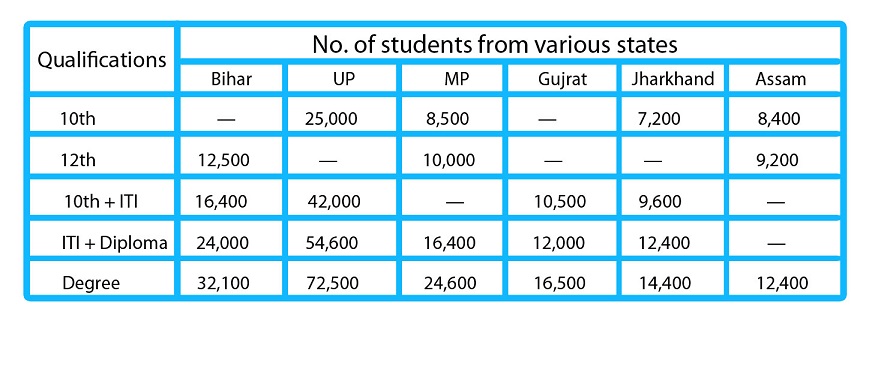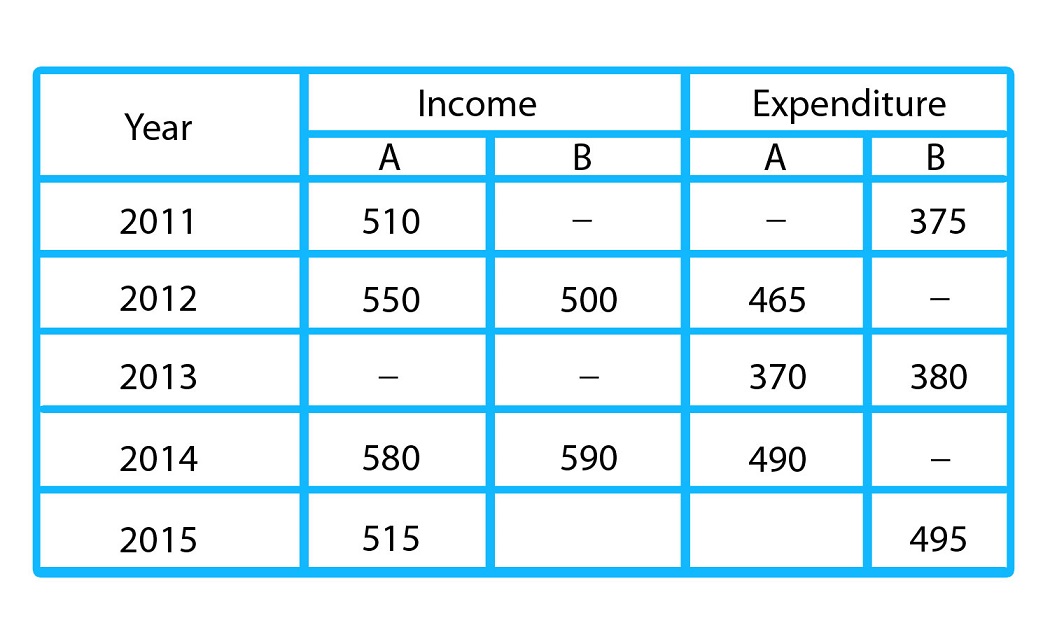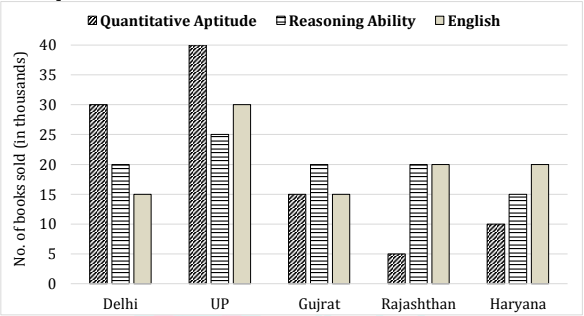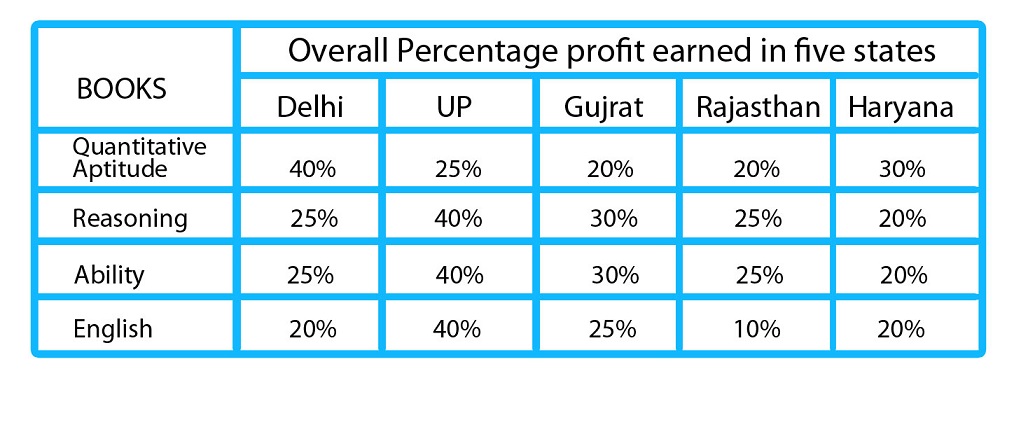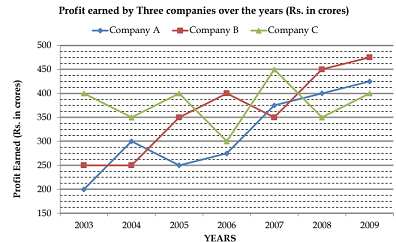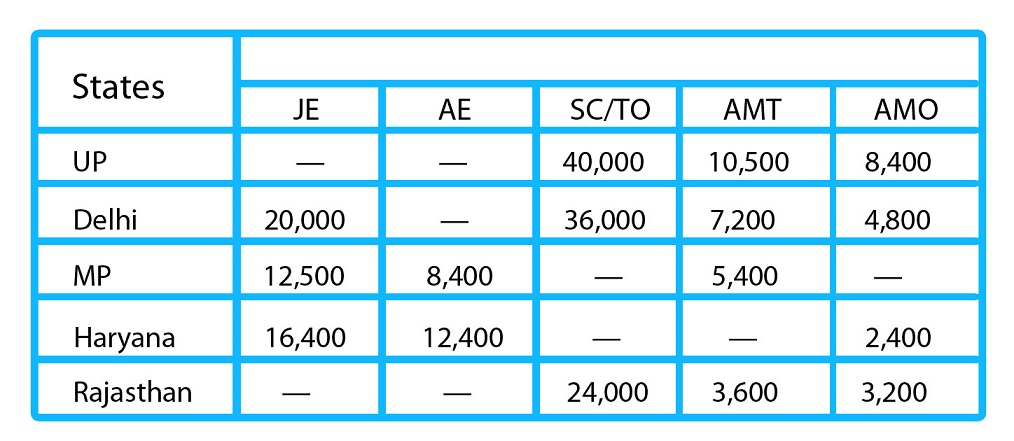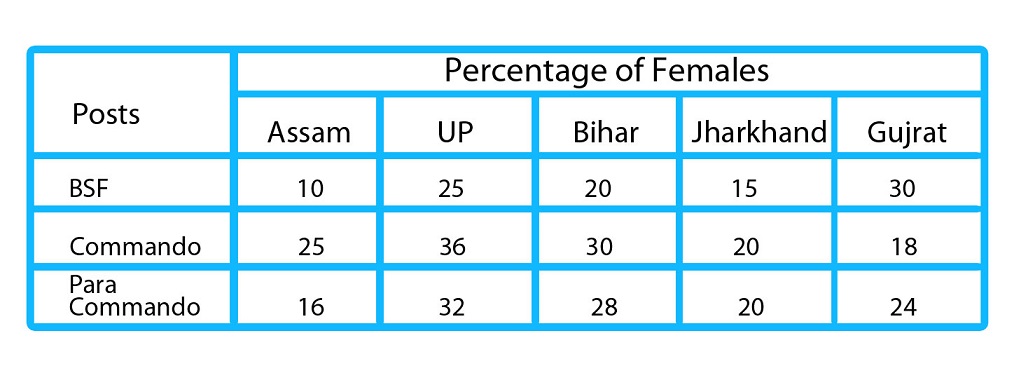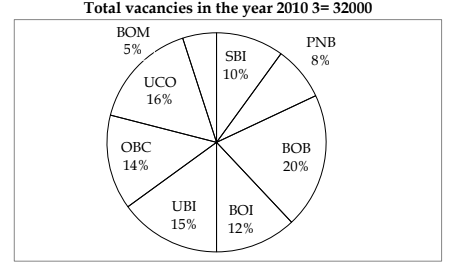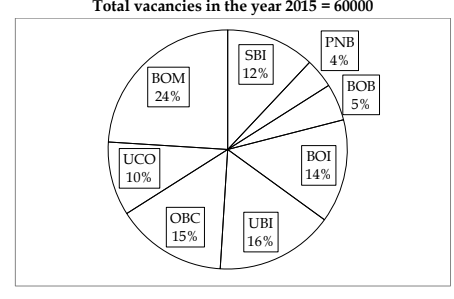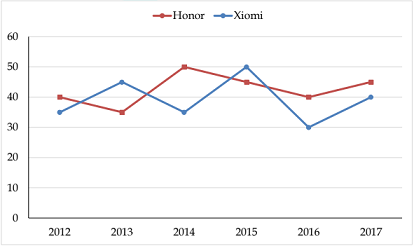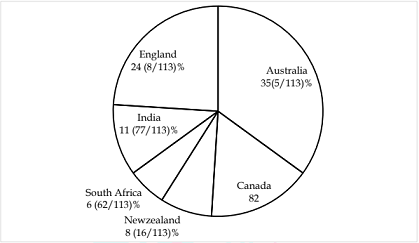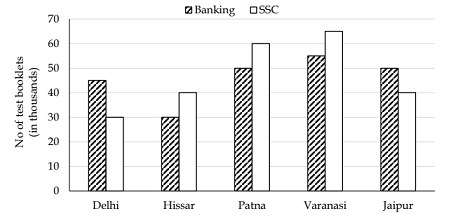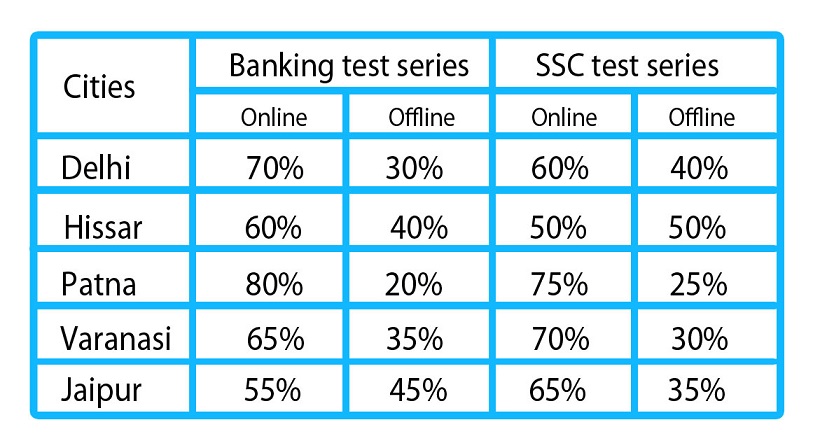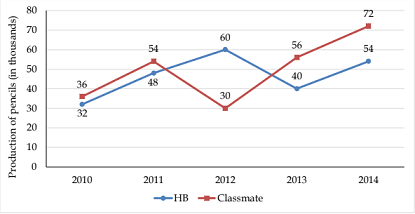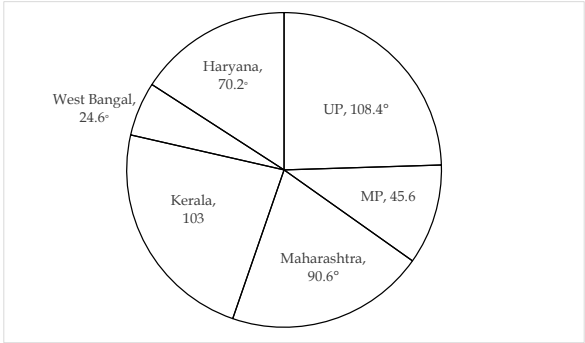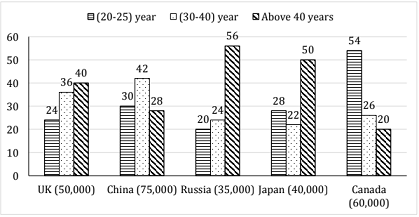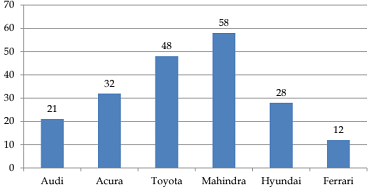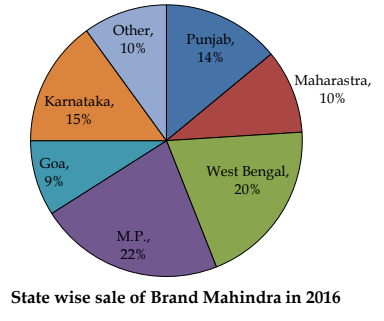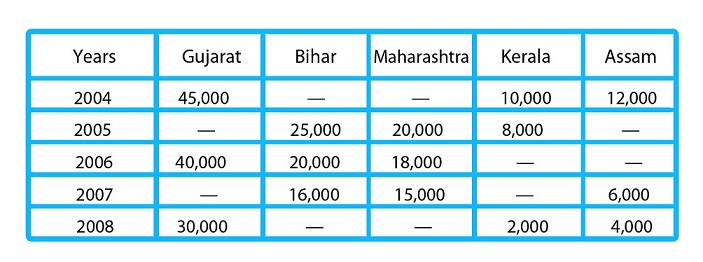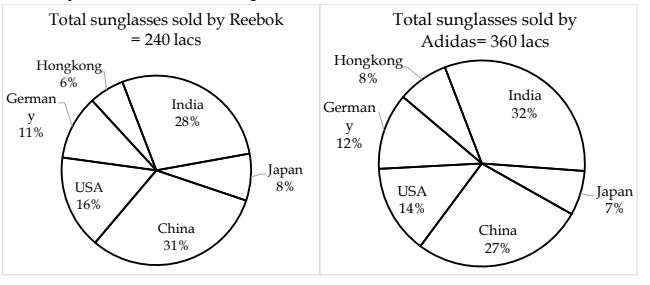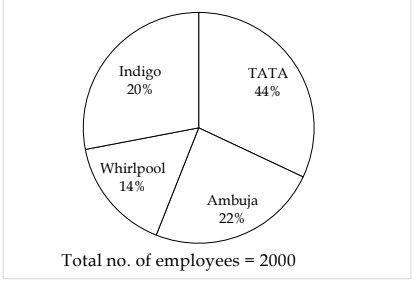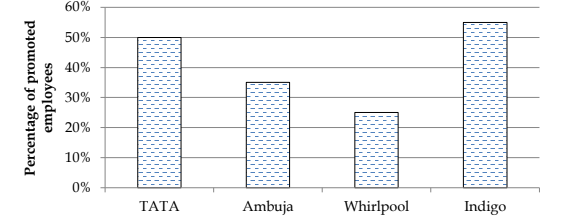 Introduction
Introduction
Data Interpretation Questions test the ability to analyze, interpret and visualize the provided data to arrive at conclusions and to make inferences. Data Interpretation questions in the competitive exams is a test of analytical abilities. In the competitive exams, the Data Interpretation questions are grouped together and refer to the same table, graph or other data/visual presentation. IBPS Clerk aspirants can practice the below questions for improving calculation speed and accuracy.
 Practice Sets
Practice Sets
Directions for Questions (1 – 5): The following table shows number of students who applied for the various posts for RRB India having different qualifications. Study the table carefully and answer the questions that follow.
In table some data are missing. Find the missing data first if it is required in any question and then proceed.
No. of students having different qualifications is independent from each-other Don’t treat any student may have more than one qualification unless it is not mentioned in questions.
Q1. If only 10th pass students are eligible for group-D exam then total number of students who applied for group-D exam from Bihar is what percent of total number of students who have qualification of degree from MP and Jharkhand together? It is given that total number of students from Bihar who applied for various posts in RRB is 95,500.
-
A. 13[latex] \frac{12} {13}[/latex]%
B. 26[latex] \frac{12} {13}[/latex]%
C. 24[latex] \frac{12} {13}[/latex]%
D. 22[latex] \frac{12} {13}[/latex]%
E. 23%
-
A. 26,750
B. 28,450
C. 27,850
D. 28,750
E. 27,580
-
A. 90,400
B. 87,500
C. 95,400
D. Can’t be determined
E. 1,30,200
-
A. 28[latex] \frac{22} {101}[/latex]%
B. 22[latex] \frac{28} {101}[/latex]%
C. 26[latex] \frac{28} {101}[/latex]%
D. 22[latex] \frac{38} {101}[/latex]%
E. 28[latex] \frac{38} {101}[/latex]%
-
A. 36,000
B. 45,000
C. 24,000
D. 54,000
E. 32,000
Directions (1-5): Study the following table carefully to answer the questions that follow.
The table shows the income and expenditure in lakhs of A and B in five different years. Note- profit = Income - expenditure.
Profit% = [latex] \frac{profit} {expenditure}[/latex]
Q1. If the percentage profit of A in year 2011 is 20% then his expenditure is by how much percent (approximately) more or less than that of A in year 2014?
-
A. 11% more
B. 18% less
C. 8% less
D. 13% less
E. 22% more
-
A. 23%
B. 25%
C. 35%
D. 20%
E. 27 %
-
A. 76[latex] \frac{7} {7}[/latex]%
B. 68[latex] \frac{4} {7}[/latex]%
C. 87[latex] \frac{4} {7}[/latex]%
D. 78[latex] \frac{4} {7}[/latex]%
E. 74[latex] \frac{4} {7}[/latex]%
-
A. 6% more
B. 6% less
C. 8% less
D. 8% more
E. 4% less
-
A. 20,000
B. 25,000
C. 18,000
D. 20,500
E. 22,000
Directions (1-5): The following bar graph shows the number of three types of books viz. Quantitative Aptitude, Reasoning Ability and English sold by Adda247 Publication in five different states of India, in the year 2017. The table shows the profit percentage earned by Adda247 Publication from these five states on the three books given above. Study both the graphs carefully and answer the questions that follow:
Q1. If cost price of one book of Quantitative Aptitude is Rs. 150 then what is the total selling price of this book earned from Delhi, Gujrat and Rajasthan together (in Rs. lakhs)?
-
A. 89
B. 101
C. 99
D. 94
E. 109
-
A. 2.28
B. 22.8
C. 24.8
D. 22.4
E. 18.8
-
A. 436.9
B. 438.2
C. 408.8
D. 440.9
E. 456.9
-
A. 82
B. 78
C. 80
D. 86
E. 92
-
A. 520%
B. 511%
C. 490%
D. 481%
E. 610%
Directions (1-5): Study the following graph carefully to answer the questions that follow:
Q1. What was percentage increase in enrollment in the number of students in District-R in year 2013 as compared to that of the previous year?
-
A. 115.5%
B. 112.5%
C. 15.5%
D. 12.5%
E. 16.5%
-
A. 12,000
B. 11,000
C. 1,100
D. 1,400
E. 16,000
-
A. 5,999
B. 5,666
C. 5,444
D. 53,333
E. 43,333
-
A. 2011
B. 2012
C. 2014
D. 2013
E. 2016
-
A. 150
B. 120
C. 250
D. 220
E. 240
Directions (1-5): Study the following graph carefully and answer the questions given below:
Q1. What was the average profit earned by all the three companies in the year 2008?
-
A. Rs. 300 crore
B. Rs. 400 crore
C. Rs. 350 crore
D. Rs. 520 crore
E. None of these
-
A. 2003
B. 2004
C. 2005
D. 2008
E. 2007
-
A. 2004
B. 2007
C. 2008
D. 2009
E. 2005
-
A. 36[latex] \frac{4} {11}[/latex]%
B. 24[latex] \frac{4} {11}[/latex]%
C. 40[latex] \frac{4} {11}[/latex]%
D. 20[latex] \frac{7} {11}[/latex]%
E. 54[latex] \frac{6} {11}[/latex]%
-
A. Rs. 50 crores
B. Rs. 1 crores
C. Rs. 100 crores
D. Rs. 200 crores
E. None of these
Directions (1-5): The following table shows the no. of students who applied for various posts in DMRC recruitment from five different states in a certain year.
Study the table carefully to answer the following questions.
Q1. If ratio of total no. of students from UP who applied for JE and AE respectively is 81 : 61 and
total no. of candidates from U.P is 1,15,700 then total no. of candidates from UP who applied for the post of AE is
-
A. 28,400
B. 22,400
C. 24,400
D. 24,000
E. 20,800
-
A. 279[latex] \frac{7} {9}[/latex]%
B. 227[latex] \frac{7} {9}[/latex]%
C. 223[latex] \frac{7} {9}[/latex]%
D. 229[latex] \frac{7} {9}[/latex]%
E. None of these
-
A. 12,760
B. 14,670
C. 16,470
D. 14,760
E. 18,460
-
A. 42,300
B. 43,200
C. 45,300
D. 44,300
E. 41,200
-
A. 4800
B. 3200
C. 3600
D. 2800
E. 5400
Directions (1-5):The following line graph shows the no. of persons who were found physically fit in army training for three different posts from five different states of India. The table shows percentage of female in them. Study both the graphs carefully to answer the questions that follow:
Q1. Find the total no. of males who were physically fit for BSF from all the five states together. (in thousands)
-
A. 14.85
B. 114.85
C. 115.45
D. 112.85
E. 116.85
-
A. 160[latex] \frac{2} {3}[/latex]%
B. 50%
C. 233[latex] \frac{1} {3}[/latex]%
D. 550%
E. 350%
-
A. 7660
B. 8600
C. 8040
D. 8160
E. 8406
-
A. 195%
B. 145%
C. 270%
D. 330%
E. 167%
-
A. 4000
B. 3000
C. 5000
D. 7000
E. 1000
Directions (1-5): The following pie-chart shows the distribution of the number of vacancies in different banks to be filled through IBPS PO recruitment exam in 2010 and 2015.
Q1. What is the difference between the central angle made by vacancies in banks SBI, UBI and UCO in the year 2010 and that of by vacancies in banks PNB, OBC and BOM in the year 2015?
-
A. 9.6°
B. 8.2°
C. 4.6°
D. 7.2°
E. 5.4°
-
A. 65[latex] \frac{2} {3}[/latex]%
B. 60%
C. 62[latex] \frac{2} {3}[/latex]%
D. 66[latex] \frac{2} {3}[/latex]%
E. None of these
-
A. 93:40
B. 85:84
C. 19:18
D. 61:59
E. 111: 91
-
A. 122.5%
B. 130.25%
C. 137.2%
D. 150%
E. 167.25%
-
A. 12%
B. 17%
C. 24%
D. 28%
E. 35%
Directions (1-5): Study the following graph carefully and answer the questions given below it.
Percentage of profit earned by two companies Xiomi and Honor over the given years
% Profit = [latex] \frac{Income − Expenditure} {Expenditure}[/latex] x 100
Q1. Total expenditure of Company Xiomi in all the years together was 82.5 lakhs. What was the total income of the Company in all the years together?
-
A. 38 lac
B. 40 lac
C. 45 lac
D. Cannot determined
E. None of these
-
A. 2 : 3
B. 23 : 37
C. 43 : 56
D. 29 : 46
E. 39 : 56
-
A. 38 lac
B. 40 lac
C. 45 lac
D. Cannot determined
E. None of these
-
A. 4 lac
B. 5 lac
C. 6 lac
D. 8 lac
E. 10 lac
-
A. 2 : 3
B. 4 : 5
C. 29 : 45
D. 39 : 55
E. None of these
Directions (1-5): The following pie-chart shows the percentage distribution of medals won by six countries in 21st CWG 2018 which is held in Australia.
Study the pie-chart carefully to answer the following questions.
Some data are in percentage value and some are in total absolute value. Total medals include
gold, silver and bronze and each country has won all the three medals.
Q1. If ratio of gold medals, silver medals and bronze medals won by India is 13 : 10 : 10 then find
the number of gold medals won by India.
-
A. 30
B. 32
C. 26
D. 40
E. 45
-
A. 45
B. 27
C. 40
D. can’t be determined
E. 62
-
A. [latex] \frac{400} {3}[/latex]
B. [latex] \frac{200} {3}[/latex]
C. [latex] \frac{500} {3}[/latex]
D. [latex] \frac{400} {9}[/latex]
E. [latex] \frac{100} {3}[/latex]
-
A. 15
B. 11
C. 13
D. 17
E. 19
-
A. 70
B. 95
C. 80
D. 100
E. 90
Directions (1-5): The following Bar-graph shows the number of Banking and SSC test booklets sold by Bankersadda in five different Cities of India.
The table shows the percentage of sellings of these booklets in there five different cites by online and offline mode.
No booklet remains unsold in any city.
Q1. Total no. of banking test booklets sold online in cities Delhi and Patna together is what percent more or less than the total no. of SSC booklets sold online in these cities together?
-
A. 13[latex] \frac{31} {63}[/latex]% more
B. 13[latex] \frac{31} {63}[/latex]% less
C. 15[latex] \frac{31} {63}[/latex]% more
D. 15[latex] \frac{31} {63}[/latex]% less
E. None of these
-
A. 78
B. 73
C. 67.5
D. 57.5
E. 63.5
-
A. 121[latex] \frac{11} {89}[/latex]%
B. 111[latex] \frac{21} {89}[/latex]%
C. 121[latex] \frac{11} {89}[/latex]%
D. 141%
E. 131[latex] \frac{21} {89}[/latex]%
-
A. 8.5
B. 7.75
C. 4.25
D. 3.25
E. 3.75
-
A. 15% more
B. 15% less
C. 25% less
D. 25% more
E. 20% more
Directions (1-5): The following line graph shows the production of pencils of two companies HB and Class mate during five different years. Study the graph carefully and answer the related questions.
Q1. What is the average no. of HB pencils produced throughout all the years?
-
A. 48,900
B. 44,800
C. 46,800
D. 46,200
E. 44,650
-
A. Rs. 16
B. Rs. 14
C. Rs. 12
D. Rs. 10
E. Rs. 18
-
A. 92%
B. 72%
C. 86%
D. 80%
E. Can’t be determined
-
A. Rs. 1,98,400
B. Rs. 1,94,400
C. Rs. 1,89,400
D. Rs. 1,96,400
E. Rs. 1,94,800
-
A. 16,000
B. 14,000
C. 12,500
D. 14,400
E. 16,600
Directions (1-5): The following pie-chart shows the no. of persons (in degree) who were awarded for their bravery and intelligence during critical conditions in the year 2017 in various states.
Study the graph carefully to answer the following question.
Q1. Find the total no. of person who were awarded for their bravery and intelligence in the state
UP, Maharashtra and West Bengal together.
-
A. 1218
B. 1118
C. 1018
D. 1128
E. 1108
-
A. [latex] \frac{100} {541}[/latex]% more
B. [latex] \frac{50} {227}[/latex]% more
C. [latex] \frac{100} {453}[/latex]% more
D. Can’t be determined
E. None of these
-
A. 8.7% more
B. 8.7% less
C. 7.3% more
D. 12% less
E. 5.3% more
-
A. 291
B. 289
C. 391
D. 301
E. 281
-
A. 246
B. 264
C. 268
D. 260
E. 272
Directions (1-5):The following bar graph shows the percentage of foreigner tourists of different age group from five different countries who visited the Red fort of India in 2016. The total no. of visitors is also mentioned with each country. Study the bar graph carefully to answer the questions that follow.
Q1. Find the average no. foreigner tourists of age groups (30-40) years from all countries together.
-
A. 16,640
B. 16,460
C. 14,460
D. 18,460
E. 16,040
-
A. 44%
B. 40%
C. 34%
D. 54%
E. 47%
-
A. 94,200
B. 94,600
C. 90,600
D. 92,600
E. 96,200
-
A. 203 : 240
B. 240 : 403
C. 403 : 240
D. 240 : 203
E. None of these
-
A. 20.8 lac
B. 2.08 lac
C. 1.08 lac
D. 3.08 lac
E. 2.008 lac
Directions (1-5): The bar graph shows the sales of six different car-manufacturers in 2016 (in thousand units) in India. The pie-chart shows the break-up of sales of Brand Mahindra in 2016 in different states of India.
Q1. What is the difference between the sales of Mahindra in West Bengal and that in Goa?
-
A. 50600
B. 6380
C. 6567
D. 6220
E. None of these
-
A. 10%
B. 9%
C. 7%
D. 13%
E. 12%
-
A. 7000
B. 6500
C. 2180
D. 10,000
E. 12500
-
A. 100%
B. 113%
C. 190%
D. 175%
E. 150%
-
A. 1,75,000
B. 1,50,000
C. 2,00,000
D. 1,00,000
E. None of these
Directions (1-5): The following table shows the number of persons who got injured in earthquake from five different states of India during five different years. Study the table carefully to answer the following questions.
Q1. If total no. of person in Maharashtra who injured due to earthquake in 2004 was 150% more than the total no. of person from same state who injured in earthquake in 2008, then the total no. of person who injured in earthquake in 2005 in Maharashtra is what percent of total no. of persons who injured in 2008 in same state (It is given that total persons who injured in earthquake in Maharashtra throughout all the years is 88,000)?
-
A. 190%
B. 210%
C. 200%
D. 150%
E. 250%
-
A. 25% more
B. 25% less
C. 20% less
D. 20% more
E. 30% less
-
A. 1,05,000
B. 1,50,000
C. 1,10,000
D. 95,000
E. 1,15,000
-
A. 54,160
B. 55,160
C. 58,160
D. 57,160
E. 49,260
-
A. [latex] \frac{400} {7}[/latex]%
B. [latex] \frac{300} {7}[/latex]%
C. [latex] \frac{200} {7}[/latex]%
D. [latex] \frac{100} {7}[/latex]%
E. [latex] \frac{500} {7}[/latex]%
Directions (1-5): Study the following graph carefully and answer the questions given below
Number of students enrolled in mechanical, electrical and civil branches of five different colleges in the year 2016
Q1. Ratio of number of male to female students in electrical discipline from college B is 16: 9 and
total professors in same college and in same branch is [latex] \frac{100} {9}[/latex]% of total female students from the same branch and same college then, find total number of professor in electrical branch from college B.
-
A. 18
B. 15
C. 20
D. 22
E. 25
-
A. [latex] \frac{100} {3}[/latex]%
B. 16[latex] \frac{2} {3}[/latex]
C. [latex] \frac{40} {3}[/latex]%
D. [latex] \frac{22} {7}[/latex]
E. None of these
-
A. [latex] \frac{34} {111}[/latex]
B. [latex] \frac{23} {322}[/latex]
C. [latex] \frac{23} {111}[/latex]
D. [latex] \frac{34} {113}[/latex]
E. None of these
-
A. 12%
B. 10%
C. 4%
D. 9%
E. 6%
-
A. 2340
B. 2900
C. 2440
D. 2800
E. 2250
Directions (1-5): The table given below provides the percentage of number of students from 5 different colleges who got placed in various companies during campus placement in year 2016. It was recorded that all students from all colleges got placed.
Q1. In KITM, 320 students were placed in at most 2 companies, which is 136 less than the number of students in HCTM who were placed in at least 5 companies. Find the ratio of total number of students in KITM and HCTM.
-
A. 3 : 5
B. 4 : 11
C. 2 : 3
D. 2 : 5
E. 3: 4
-
A. 105
B. 201
C. 160
D. 102
E. 120
-
A. LPU
B. GITM
C. MMU
D. HCTM
E. KITM
-
A. 2750
B. 2680
C. 2700
D. 2500
E. None of these
-
A. 448
B. 488
C. 484
D. 450
E. 438
Directions (1-5): The following pie-chart show the number of sun glasses (in percentage) sold by two companies Reebok and Adidas during the year 2016-17 in six different countries. Study the graph carefully and answer the related questions.
Q1. Total number of Reebok sunglasses sold in India are approximately what percent more or less than the total number of Adidas sun glasses sold in China?
Required difference = (27 + 14 + 8) % of 360 - (31 + 16 + 6) % of 240 = 176.4 - 127.2 = 49.2 lacs Q3. Total number of Adidas sunglasses sold in Japan and Germany together is what percent of Reebok sunglasses sold in the same countries together?
-
A. 31% more
B. 31% less
C. 27% less
D. 27% more
E. 23% less
-
A. 47.2 lacs
B. 42.9 lacs
C. 4.92 lacs
D. 43.8 lacs
E. 49.2 lacs
Required difference = (27 + 14 + 8) % of 360 - (31 + 16 + 6) % of 240 = 176.4 - 127.2 = 49.2 lacs Q3. Total number of Adidas sunglasses sold in Japan and Germany together is what percent of Reebok sunglasses sold in the same countries together?
-
A. 150%
B. 180%
C. 300%
D. 100%
E. 250%
-
A. 3: 5
B. 2: 3
C. can’t be determined
D. 3: 4
E. None of these
-
A. 5.04 lacs
B. 50.4 lacs
C. 60.4 lacs
D. 40.6 lacs
E. 48.4 lacs
Directions (1-5): Study the following pie chart and bar graph carefully and answer the questions given below:
The pie-chart shows the percentage of employees working in four different companies and the bar graph shows the percentage of employees promoted in these companies.
Q1. What is the total number of promoted employees in Whirlpool and Ambuja together?
-
A. 250
B. 224
C. 235
D. 228
E. 244
-
A. 215
B. 220
C. 204
D. 202
E. 256
-
A. [latex] \frac{297} {40} [/latex]
B. [latex] \frac{285} {142} [/latex]
C. [latex] \frac{305} {243} [/latex]
D. [latex] \frac{281} {11} [/latex]
E. None of these
-
A. 255
B. 305
C. 285
D. 279
E. 384
-
A. 33%
B. 35%
C. 31%
D. 25%
E. 22%






